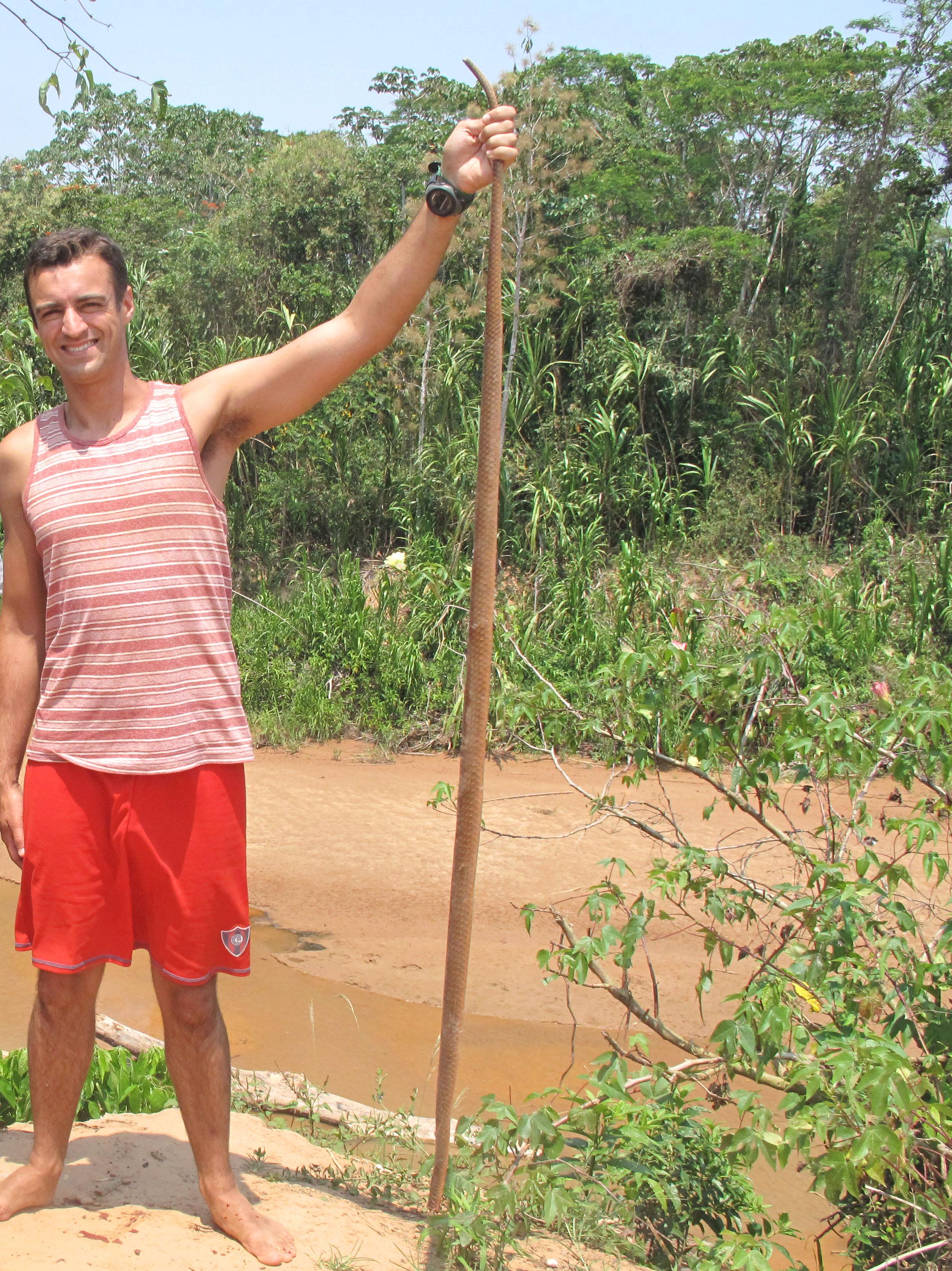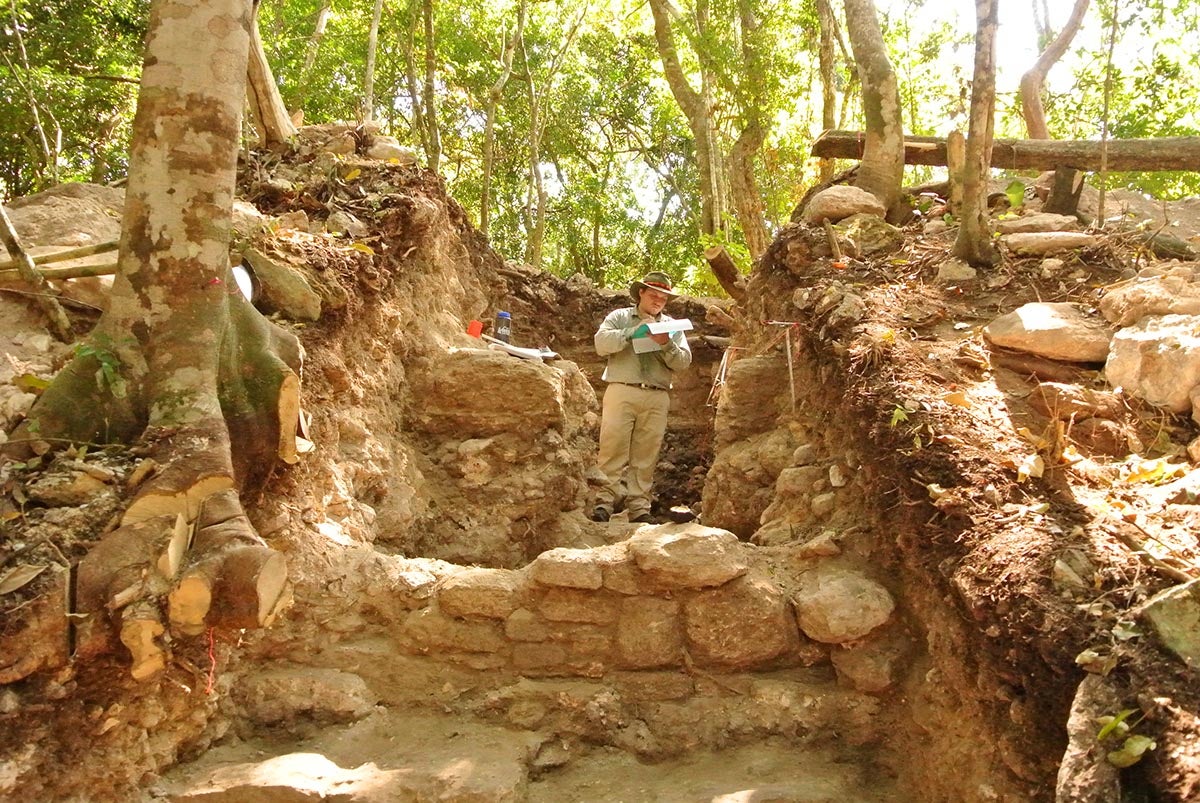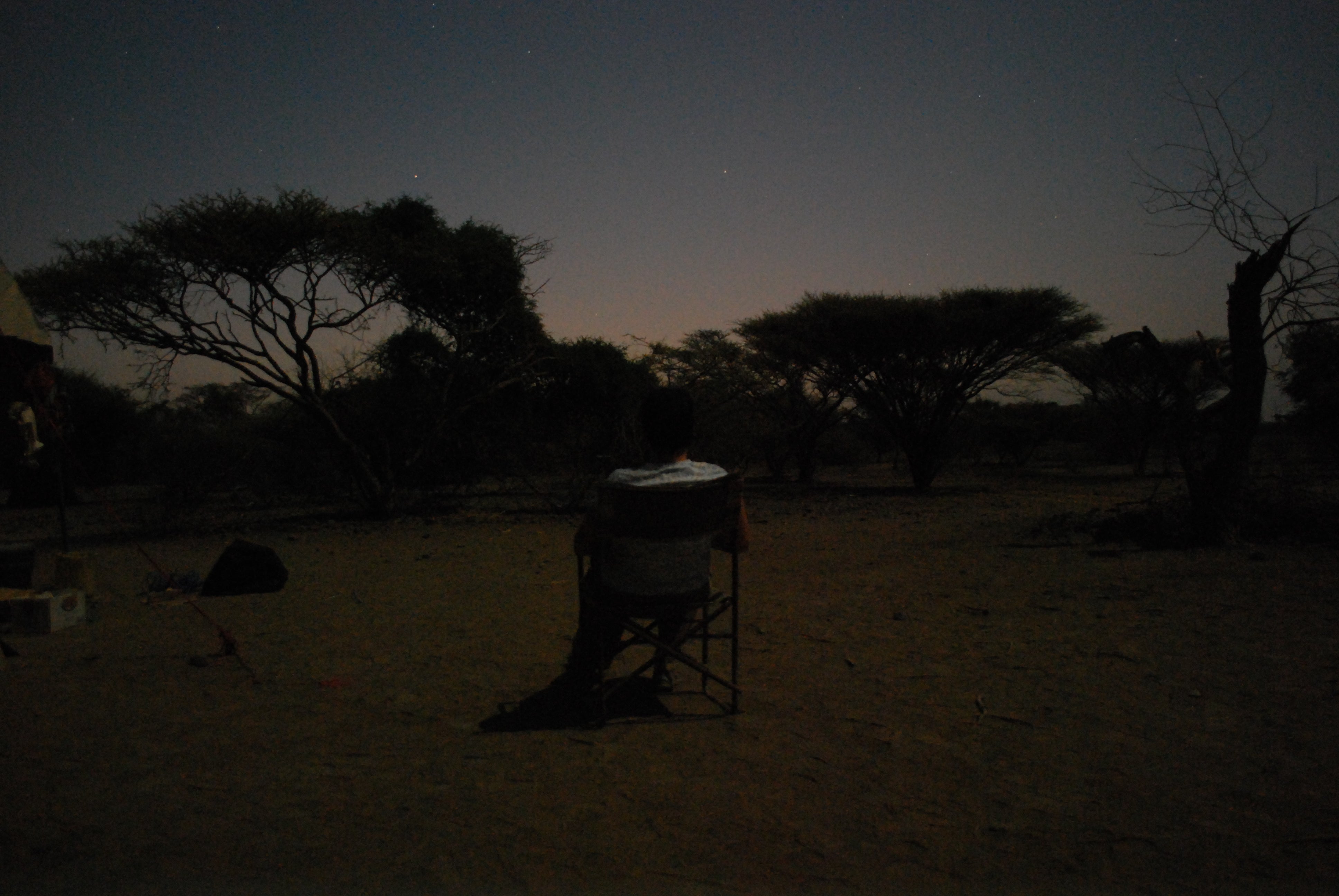The last few weeks of summer are a prime time to hit the road and enjoy the wilderness, whether it’s hiking, biking, rafting or camping. The trick is knowing what to do when faced with nature’s unexpected perils, from troublesome wildlife to extreme weather.
The graduate students of ASU’s School of Human Evolution and Social Change are a special group whose summer R&R involves more research and rigor than rest and relaxation. When it comes to adventuring in unusual places around the globe, they have plenty of experience.
Shelter eaten by camels? Ancient well run dry? Jaguar circling the camp? They’ve seen it all, and they’re here to share their wisdom to help your next nature expedition, wherever it may take you, go right.
Question: What are you studying?
Adrian Chase, archaeologist: I am studying the archaeology of urbanism and the ancient Maya located primarily in modern-day Belize, Guatemala and Yucatán Mexico.
Chase works at the Maya archaeological site of Caracol.
Andrew Bishop, human behavioral ecologist and Institute of Human Origins affiliate: I work with indigenous tribes in Paraguay (the Ache) and Bolivia (the Tsimane) who get a portion of their diet from traditional hunting. I’m trying to understand how the traits of a hunted animal impact the hunter’s prestige in catching it, and also whether hunters gain more prestige by bringing home more meat or by killing rare and impressive animals.
Irene Smail, evolutionary anthropologist and Institute of Human Origins affiliate: I study dead monkeys! Specifically, I study the teeth of modern (from museum collections) and extinct Old World monkeys to understand past and present primate community structures. Ultimately, I want to use this research to better understand how fossil hominin species were able to coexist in the past, and why those fossil hominin communities no longer exist today.
Q: Where is your research site, and what are conditions there like?
Smail: I work in Ledi-Geraru, located in the Afar region of Ethiopia. In many ways it's very similar to Phoenix — a hot, dry desert environment. There is little vegetation, although we do have some acacia trees near our camp site. We have to watch out for snakes, scorpions and camel spiders, but we also get to see larger wildlife, including gazelles, ostriches, baboons, hyenas and jackals.
Chase: My primary research site is the large Maya city of Caracol in Belize. The archaeological reserve is located within the Chiquibul National Park, and there is no modern town or settlement nearby. This ancient city rests beneath a large jungle canopy full of tropical wildlife, and in fact, visitors come for that as often as they do for the archaeology.
Bishop: I've worked in two sites, one in the Bolivian Amazon and one in the Atlantic forests of Paraguay. If you imagine a rainforest or jungle, you are probably imagining something that looks like my research sites. Both are very rainy, humid and green, with incredible plant and animal biodiversity. Common large species you might encounter include jaguars, tapir, peccaries, armadillo, coatis, monkeys, caiman, birds and snakes. But you can't discuss my field site without mentioning the insects — mosquitoes, bees, wasps and tons of ants!
Q: What is your favorite memory from camping at your site?
Bishop: My favorite part of being in the forest is the sense of camaraderie you feel while sitting around camp in the evening. The Ache have an especially good sense of humor, and love to sit around making jokes and teasing one another. Another thing I love is all the cool food you get to try. For example, we commonly ate bee larva, palm grubs, roasted peccary, rattlesnake, fish-head soup, and even some rare treats like whole-cooked armadillo embryos.
Smail: My favorite memory of camping in the field is probably waking up early to watch the sunrise. Usually, things are very hurried and crowded in the morning as everyone scrambles to get ready, eat and pack the vehicles. But the kitchen always made sure to have buna (coffee) ready early for those of us who liked taking our time before the main rush of the day.
Smail waits for the sunrise at Ledi-Geraru. Photo courtesy of Irene Smail
Chase: Picking just one favorite memory would be quite difficult, but from this past season, my favorite wildlife moment probably involved looking up from my excavation and seeing a wild tapir (the Belizeans sometimes call them "mountain cows") about 30 feet away. Thankfully it was downhill and departed when it noticed me watching.
Q: What was your most extraordinary encounter with nature?
Smail: I got a horrible stomach bug and had to stay home from the field one day. In the middle of the afternoon, I woke up from a nap to find two camels parked directly outside my tent door happily eating the tree I was camped under.
Chase: We work in the dry season at Caracol, and while it does occasionally rain, our crew of about 20 people can run out of rainwater. We use water from a still-functioning ancient Maya reservoir for bathing and washing, but it isn't potable. Once, both our water tanks and the reservoir ran dry, and we had to use large water trucks to haul water from the river several miles away.

Bishop captures a snake near a river at his site in Bolivia. Photo courtesy of Andrew Bishop
Bishop: One of the scariest moments was when a jaguar visited our camp in the middle of the night. The Ache men woke everyone up and we had to remain quiet in our ring of fire while the men with bows stood watch. It was a cool but scary 20 minutes as the jaguar slowly circled our camp and approached within 10 meters before leaving.
Q: Based on your experiences, what’s your advice to someone planning to rough it in the outdoors?
Chase: If you’re in a jungle or forest environment, remember to wear long sleeves, pants and boots. Don't forget to use sunscreen and insect repellent. Finally, stay hydrated — water can be scarce!
Bishop: You should pack light. Way lighter than you think. I usually carried about five pounds of gear plus the clothes I was wearing when we went on multi-day forest treks. Also, make yourself eat. You will be tired and hot, and the food may not seem appetizing, but you need to make yourself do it, or you will go downhill fast.
Smail: Number one tip for the desert: bring electrolytes or something to add to your water. There was no refrigeration at our site, and I got sick of drinking plain, warm water. Plus, electrolytes will help replace what you sweat out.
More Science and technology

ASU and Deca Technologies selected to lead $100M SHIELD USA project to strengthen U.S. semiconductor packaging capabilities
The National Institute of Standards and Technology — part of the U.S. Department of Commerce — announced today that it plans to award as much as $100 million to Arizona State University and Deca…

From food crops to cancer clinics: Lessons in extermination resistance
Just as crop-devouring insects evolve to resist pesticides, cancer cells can increase their lethality by developing resistance to treatment. In fact, most deaths from cancer are caused by the…

ASU professor wins NIH Director’s New Innovator Award for research linking gene function to brain structure
Life experiences alter us in many ways, including how we act and our mental and physical health. What we go through can even change how our genes work, how the instructions coded into our DNA are…


